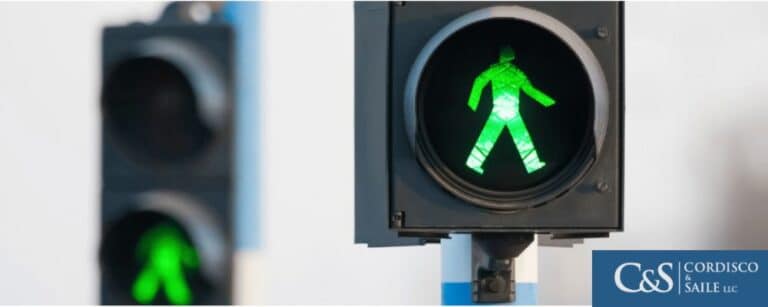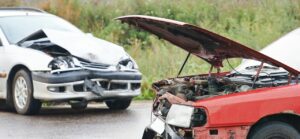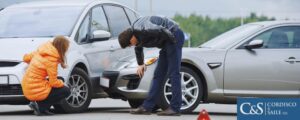Pedestrian Law For Pennsylvania Drivers and Pedestrians

As drivers, how many of us really know what Pennsylvania traffic law requires of us when we come upon a pedestrian – either entering a crosswalk, at a traffic light, in a mall parking lot, or simply walking along the road? We at Cordisco & Saile LLC have noticed an increased number of pedestrian-car accidents resulting in both severe injuries and death. We feel it is a good idea to review Pennsylvania Driver/Pedestrian Laws. There are laws in place in Pennsylvania to protect pedestrians but by the same token, there are rules that pedestrians must observe with regard to their own safety as well of that of motorists.
The most important general rule for motorists to remember is that pedestrians sometimes have the right-of-way at intersections. “When traffic-control signals are not in place or are not in operation, the driver of a vehicle shall yield the right-of-way to a pedestrian crossing the roadway within any marked crosswalk or within any unmarked crosswalk at an intersection.” One very important fact for a pedestrian to remember is that a driver may not see you. Do not assume that because you see the driver, the driver sees you. In order to avoid a very unnecessary car accident, try to make eye contact with the driver; make sure he sees you before you cross.
A driver approaching a vehicle stopped at a crosswalk or intersection (allowing a pedestrian to cross), is not permitted to pass the stopped vehicle and proceed through the intersection or crosswalk. This would, of course, compromise the safety of the pedestrian.
Though, drivers are required to yield to pedestrians in crosswalks, it is still necessary for pedestrians to exercise care when entering a crosswalk by looking left-right-left for oncoming traffic. In order to avoid pedestrian–car accidents, pedestrians must take responsible safety measures. For example, the law states that pedestrians are not to suddenly step off of a curb or sidewalk and run into the path of an oncoming vehicle. Even if you are stepping off of a curb into a crosswalk, a seemingly pedestrian-protected area, it is the pedestrian’s responsibility to make sure oncoming traffic is still at a safe enough distance to be able to make a safe and complete stop at the crosswalk.
The safest approach for a pedestrian to take is to make all crossings at a corner or at a physical marked crosswalk. “Every pedestrian crossing a roadway at any point other than within a crosswalk at an intersection or any marked crosswalk shall yield the right-of-way to all vehicles upon the roadway.” In urban areas where traffic-control signals are in operation, it is required that pedestrians cross only in a marked crosswalk. Likewise in urban areas, it is common for vehicles to enter or emerge from an alley, side street, public parking garage, or driveway. In these cases, the driver must yield the right-of-way to any pedestrian approaching on any sidewalk extending across the alley, side-street, garage, or driveway. This rule, however, applies in all settings, not only urban communities.
In a patrolled area pedestrians and motorists alike must obey the instructions of a police officer or other official authorized to direct or regulate traffic, such as a school crossing guard. In an unpatrolled area or an area unequipped with electronic traffic control signals, such as the universal white “walk” symbol at a traffic light, drivers are required to yield the right-of-way to any pedestrian(s) crossing the roadway, whether a marked crosswalk is present in the road or not.
If a sidewalk is in place, pedestrians are required to make use of the sidewalk and are not permitted to walk upon the adjacent roadway. When a sidewalk is not available, any pedestrian walking along the roadway must remain on the shoulder, as far as possible from the edge of the roadway, and must yield the right-of-way to all vehicles on the roadway. Though the burden of safety falls on the pedestrian when walking along a roadway, we remind motorists to employ rules of common courtesy when pedestrians are present.
Pedestrians, like motorists, are required to yield the right-of-way to authorized emergency vehicles. Emergency vehicle operators, too, are obliged to exercise care to avoid colliding with other vehicles or any pedestrian.
As we all know, driving under the influence (DUI) is against the law in Pennsylvania. Additionally, it is unlawful for a pedestrian who is under the influence of alcohol or a controlled substance and deemed a hazard to proceed along any street or roadway.
Only when motorists and pedestrians alike abide by the traffic laws in place and are mindful that we share the road, can the number of Pennsylvania pedestrian-car accidents be reduced. These accidents often result in the pedestrian suffering severe injuries, including head injuries/brain damage, broken bones, and even wrongful death. It is vital in this age of cell phone usage and texting while behind the wheel that we all exercise care when operating our vehicles or heading out for our morning walk.







